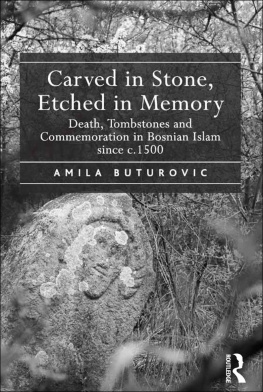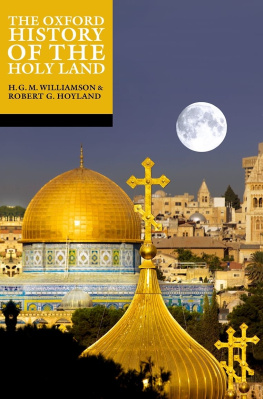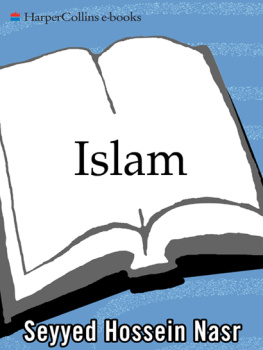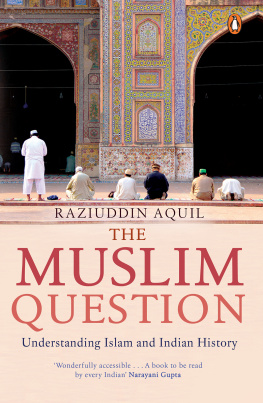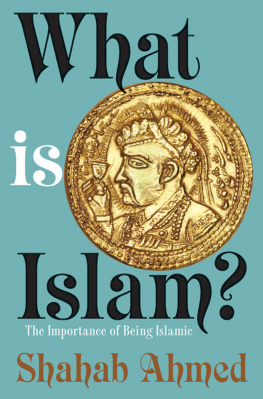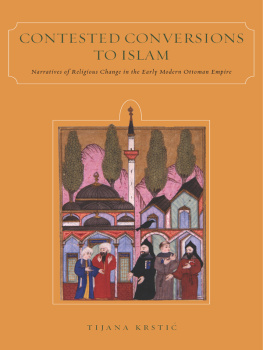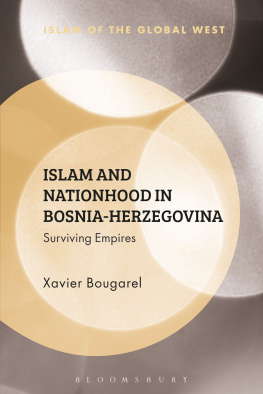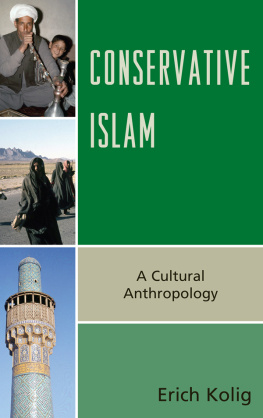C ARVED IN S TONE , E TCHED IN M EMORY
Despite the recent history of violence and destruction, Bosnia-Herzegovina holds a positive place in history, marked by a continuous interweaving of different religious cultures. The most expansive period in that regard is the Ottoman rule that lasted there nearly five centuries. As many Bosnians accepted Islam, the process of Islamisation took on different directions and meanings, only some of which are recorded in the official documents. This book underscores the importance of material culture, specifically gravestones, funerary inscriptions and images, in tracing and understanding more subtle changes in Bosnias religious landscape and the complex cultural shifts and exchange between Christianity and Islam in this area.
Gravestones are seen as cultural spaces that inscribe memory, history and heritage in addition to being texts that display, in image and word, first-hand information about the deceased. In tackling these topics and ideas, this study is situated within several contextual, theoretical and methodological frameworks. Raising questions about religious identity, history and memory, the study unpacks the cultural and historical value of gravestones and other funerary markers and bolsters their importance in understanding the regions complexity and improving its visibility in global discussions around multiculturalism and religious pluralism. Drawing upon several disciplinary methods, the book has much to offer anyone looking for a better understanding of the intersection of Christianity and Islam, as well as those with an interest in death studies.
Amila Buturovic is Associate Professor of Humanities and Religious Studies at York University, Toronto.
Carved in Stone, Etched in Memory
Death, Tombstones and Commemoration in Bosnian Islam since c. 1500
Amila Buturovic
First published 2015 by Ashgate Publishing
Published 2016 by Routledge
2 Park Square, Milton Park, Abingdon, Oxon OX14 4RN
711 Third Avenue, New York, NY 10017, USA
Routledge is an imprint of the Taylor & Francis Group, an informa business
Copyright Amila Buturovic 2015
Amila Buturovic has asserted her right under the Copyright, Designs and Patents Act, 1988, to be identified as the author of this work.
All rights reserved. No part of this book may be reprinted or reproduced or utilised in any form or by any electronic, mechanical, or other means, now known or hereafter invented, including photocopying and recording, or in any information storage or retrieval system, without permission in writing from the publishers.
Notice:
Product or corporate names may be trademarks or registered trademarks, and are used only for identification and explanation without intent to infringe.
British Library Cataloguing in Publication Data
A catalogue record for this book is available from the British Library
The Library of Congress has cataloged the printed edition as follows:
Buturovic, Amila, 1963
Carved in stone, etched in memory : death, tombstones and commemoration in Bosnian Islam since c. 1500 / by Amila Buturovic.
pages cm
Includes bibliographical references and index.
ISBN 978-1-4724-3260-5 (hardcover) ISBN 978-1-3155-7092-1 (ebook) ISBN 978-1-3171-6956-7 (ePub) 1. MuslimsBosnia and HerzegovinaSocial life and customs. 2. DeathSocial aspectsBosnia and HerzegovinaHistory. 3. DeathReligious aspectsIslamHistory. 4. Sepulchral monumentsBosnia and HerzegovinaHistory. 5. MemorialsBosnia and HerzegovinaHistory. 6. Islamic funeral rites and ceremoniesBosnia and HerzegovinaHistory. 7. Material cultureBosnia and HerzegovinaHistory. 8. Bosnia and HerzegovinaReligious life and customs. 9. IslamRelationsChristianityHistory. 10. ChristianityRelationsIslamHistory. I. Title.
DR1674.M87B88 2015
305.6970949742dc23
2015007105
ISBN: 9781472432605 (hbk)
ISBN: 9781315570921 (ebk-PDF)
ISBN: 9781317169567 (ebk-ePUB)
Contents
List of Figures
Acknowledgements
I am grateful for the support I received from many individuals and institutions in preparing this book. The financial and administrative assistance from York University and the Social Sciences and Humanities Research Council of Canada enabled me to carry out fieldwork in Bosnia and Herzegovina and conduct library research at home and overseas. I sincerely appreciate the generous intellectual engagement of many colleagues and friends, in Canada, Bosnia and Herzegovina, Turkey, the U.S. and elsewhere, who offered valuable feedback and provided me with the opportunity to present the material at different academic and public venues and in front of diverse audience. Their comments and recommendations were paramount for the successful completion of the book, but any shortcomings in it are exclusively mine.
Special thanks are extended to Selma Zeevi, Snjeana Buzov, Hande Solakolu, Irvin C. Schick, Andras Reidlmayer, Asya Hekimolu, Michael Porretta, Edina Beirevi, Mark Auslander and Paul Szeptycki for their helpful suggestions and encouragement; the Ashgate Publishing team, especially Thomas Gray, Tricia Craggs and Johanna Robinson, for their efficient editorial guidance in preparing the manuscript; and the anonymous readers for their rigorous criticism and insightful comments on the manuscript.
The book would not have acquired its present form if it had not been for Velibor Boovi: his skill in perceiving and visually recording the stone memorials steered the book in a direction not initially considered. His friendship and engagement during our field trips, some animated by delightful discoveries and others tedious and even treacherous because of the elements, land mines and unfriendly flora and fauna, encouraged me to visit locations to which I would not have ventured on my own. To Velibor, this book owes much more than its visual enrichment.
Finally, I extend gratitude to my dear ones who had already crossed to the other side but kept me steady company as I did research and wrote this book. Nur iinde yatsnlar.
Introduction
This study is a product of two simultaneous journeys. The first one was motivated by a personal reconnection to the place of my birth and youth, which I had lightheartedly left nearly 30 years ago in pursuit of graduate studies in Canada. Little did I know that the departure would take a turn of no return, that Yugoslavia to which Bosnia and Herzegovina had belonged as a constituent federal republic would shatter into nothingness and take some of my most beloved people with it. The newly formed state of Bosnia and Herzegovina was barely a month old when it became enveloped in war and genocide drawn along ethno-religious lines. Even as the conflict raged on, dividing families and friends and the neighbourhoods and cities they inhabited, the idea of conflict and loss amidst the most palpable reality of both seemed unfathomable. The mind sometimes refuses to accept. In the aftermath of the war I readily sided with those who imagined a new modernity unfolding rapidly from the ashes of destruction in which Bosnia and Herzegovina, once again, would prosper as a complex society where neither religion nor ethnicity would define the boundaries of what mattered. Where, against the foibles of the 1995 Dayton Peace Accords, which ended the violence but reinforced the violence-induced partition, the arteries connecting all those who believed in a unified civil society would flow freely with cosmopolitan energy, democratic aspirations and strong social ethics. Such Bosnia would, truthful to its long historical legacy, once again defy all impositions of uniformity and allow its Muslims, Catholics, Orthodox Christians, Jews and others to jointly shape and nurture a productive society, as they had done over many centuries. After all, history could only be progressive and, despite a(nother) violent episode, the sum of all good actions would secure full closure and proper healing to the survivors, justice for war crimes and a global recognition of Bosnias importance in the aftermath of the 199295 genocide and culturecide.

